Cathedral where geese live
Cathedral of sv. Eulalia in the center of Barcelona. The cathedral is squeezed with houses from all sides, therefore it is almost impossible to consider it entirely. But what can be seen is quite enough to make sure that in front of you is a real masterpiece of medieval architecture.
And it was like that, even in the IV. on a small hill Mons Taber, where the Roman colony was located, was already a church. Two centuries later, it turned into the Cathedral, where the Church Council was held in 559 - an event of that time that is truly significant. But the Moors of al-Mansur in 985 destroyed it and had to count Ramon Berenger I about a thousandth year to start at the old place the construction of a new cathedral in the Romanesque style traditional for that era. And then King Jacob II of Aragon decided that this temple was small, and ordered to build a grandiose cathedral in its place, which we see today in the very center of Barcelona and its popular Gothic Quarter.
Here they are - his wonderful gothic vaults!
And this…
And this too ...
It began to be built in 1298 and it was built exactly 150 for years, having finished construction in 1448 according to all the canons of the traditional Catalan Gothic. The Cathedral was dedicated to St. Eulalia, a young girl who lived in the IV. and, of course, was subjected to savage torture and martyred for the faith. As it happens very often, the building was rebuilt many times. For example, its main facade in its modern form was renewed at the end of the last century and still raises criticism, although it is believed that the architects who worked on it used the original 1408 drawings. The Spire of the cathedral was completely erected only in 1913. But in principle for those who are inside this temple, all this does not really matter. It has a completely different meaning - a huge ceiling stretching to inconceivable height from Gothic arches and the stained glass windows of huge windows made in the 15th century. and illuminating at once three naves.
And this is one of these windows.
This cathedral, like Ali Baba’s cave, is half-gloom, and the more you walk on it, the more treasures are revealed to you. And no wonder, because in it 26 chapels and sacristy, a crypt with a sarcophagus of St.. Eulalia, a wonderful cloister - you can’t look at it all, just your eyes are running up!
From the abundance of sculptures and gilding just dazzled.
Not really, though, it is clear who many of these sculptures depict, since most of the inscriptions are made in Spanish, and those made in English are not enough. But it is clear that all of them are saints revered here, therefore, they did not spare the gold on them!
And look inside this cathedral does not revise everything! Immediately near the main entrance is the Baptistery Chapel with marble baptismal fonts, the work of Onofre Julia circa 1443. Accordingly, from the opposite side is the Chapel of St. Oligaria with a beautiful wrought iron grate of 1405. Next is the chapel and altar of Bishop Oligaria, over which you can see a unique wooden Crucifix, which Don Juan of Austria (the late son of the Spanish King Philip II) took to the Christian squadron flagship fleet in the battle with the Turks at Lepanto. Following the Chapel of St. Oligaria is the Chapel of St. Clement with the Gothic sarcophagus of Doña Sansa Simenis de Cabrera and the altar of the XNUMXth century. Behind the transept is the Chapel Major (Main Chapel) of the cathedral. Well, and in the numerous chapels that encircle the choirs of the gallery, there are also numerous other altars of the XIV and XV centuries, which are considered unsurpassed examples of Catalan art. In the Chapel of St. Miguel preserved altar of the XIV century. with the canvas on the plot “Visit”, in the Chapel del Patrosini (Chapel of the Holy Patrons) one of the masterpieces of Bernat Martorell is presented - the altar image “Transfiguration”, in the apse of the Chapel del Santissima Sacramento (Holy Communion) is the altar of the XIV century. with the image of the Archangel Gabriel. The sixth chapel in the altar depicts St. Martin and St. Ambrose, in the seventh (XV century) - St. Clara and St. Catherine. In the chapel of St. Inocentia is the Gothic tombstone of Bishop Ramón de Escales. To the right of the Main Altar there are two unique gravestones belonging to the founders of the cathedral: Count Ramon Berengerv I and his wife Almodis. To the left of the transept, you can get to Carrer dels Compes through Porta de Sant Iu, the oldest part of the cathedral, whose architecture has preserved Romanesque features.
In many chapels are statues. Next to the inscription in Spanish, but who is who to disassemble with the habit is complicated. For example, I really liked the sculpture of this saint in armor. But who is he - of sv. George, sv. Lucas or st. Sebastian, I still did not fully understand.
Under the main altar there is a staircase that leads to the Crypt, where in the sarcophagus of alabaster (1327 - 1339, the work of one of the disciples of Nikola Pisano, but it is not known exactly who it was) remains of St. Eulalia.
Often in medieval cathedrals you can meet knight effigy, and I, frankly, very much hoped that here I will get at least one. But no! There were no such people in the cathedral of Barcelona. But he managed to photograph a beautiful sarcophagus of alabaster with effigiy on the lid, which belonged to some bishop, very fine work.
In the central part of the main nave you can see the Renaissance fence of a large choir. Work on it began as early as 1390, when Ramon de Escales was Barcelona's bishop: his coat of arms (three staircases) can be seen on the walls of the choir. This fence is interesting because it is decorated with marble bas-reliefs depicting scenes from the life of St.. Eulalia, works by sculptors Ordonez and Vilara (1517) Behind the fence there is also something to see: there are famous wooden armchairs that adorn the multicolored gilded emblems of the Knights of the Order of the Golden Fleece, which the Emperor Charles V and the Archduke convened in this Cathedral in 1519. Maximilian of Austria. The chairs and the episcopal chair are the work of Sa-Anglades, and the pinnacles that adorn them are carved spiers similar to those crowned by the roofs of the cathedral — the work of the German master Lochner (completed at the end of the 15th century). In the corner, to the right of the Main Chapel, is the Sacristia, where the catholic Treasury is kept, representing the most valuable collection of religious objects and church art, among which is a 15th century reliquary, decorated with the Golden Rune order chain, personally owned by Charles V, the gilded chair of Aragon's Martin I and the 1390 tabernacle made of gold and silver. That is, things from a cultural and historical point of view are absolutely priceless.
One of the side entrances to the cathedral.
And this is his "rose". You don't even know which one is the main one or this entrance is more beautiful ...
In Kluatr (inner courtyard) you can get through the southern gate of the temple, from the Santa Lucia Chapel, located to the right of the main entrance to the cathedral, and through the beautiful portal of St. Eulalia in the style of "flaming" Gothic, XV century. Here you can see the covered Gothic gallery, and a charming garden with magnolias, medlar and palm trees, a small active fountain, as well as the cathedral museum, which houses a 11th-century font, ancient tapestries and various church utensils. But the most interesting thing in this courtyard is white geese. Yes, yes, here behind the bars, and from time immemorial, live white geese, exactly 13 pieces - and for some reason it is believed that they guard the rest of the townspeople who are buried near the cathedral. These geese are very important and well-fed, downright Christmas, but they gladly accept food from the hands of tourists. Probably, if they could talk, they would have long ago expressed themselves not only in Spanish, but also in French, and in Italian, and even in Russian, since our compatriots here are also missing.
Here is the gallery ...
And here are these famous geese ...
The courtyard inside.
We in the churches decided to put candles. And here too there were plenty of candles, but instead of live fire there were light bulbs in them. It is interesting that around each altar there was made something like a frame of light bulbs, and at its base there is a coin acceptor at the level of the hand. My granddaughter really wanted to put a coin in there, and I gave her a one-cent coin. Click! And in front of the altar one light bulb caught fire. Shone a little and went out. From two cents two bulbs caught fire already. Then my granddaughter got a taste and demanded one euro. And she did not have time to lower it, as a hundred light bulbs lit up immediately around the altar. Burning, they, however, not very long, but it was very beautiful. And by the way, everything is fair - you pay money - it burns. It is not necessary to watch, as we have, that a candle put by you at once is some kind of ... “strange woman in black” will not extinguish and put it in the box under the altar. Not always and not always, but ... it happens!
Coming out of the cathedral, you will certainly want to get around it from all sides. Do not forget that the entrance to the "Gothic Quarter" is to the right of the cathedral, if you face it and you can wander there for a very, very long time.
Entrance to the streets of the "Gothic Quarter".
So there you can wander for a very long time ...
But there are a lot of interesting things too ... Here, for example, what a fancy street balcony.
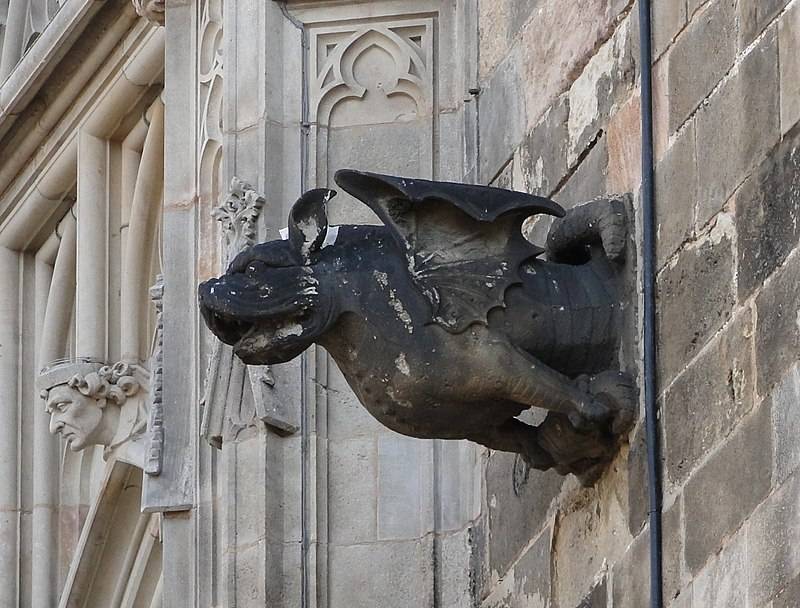
On the walls of the cathedral you can see such a gargoyle ...
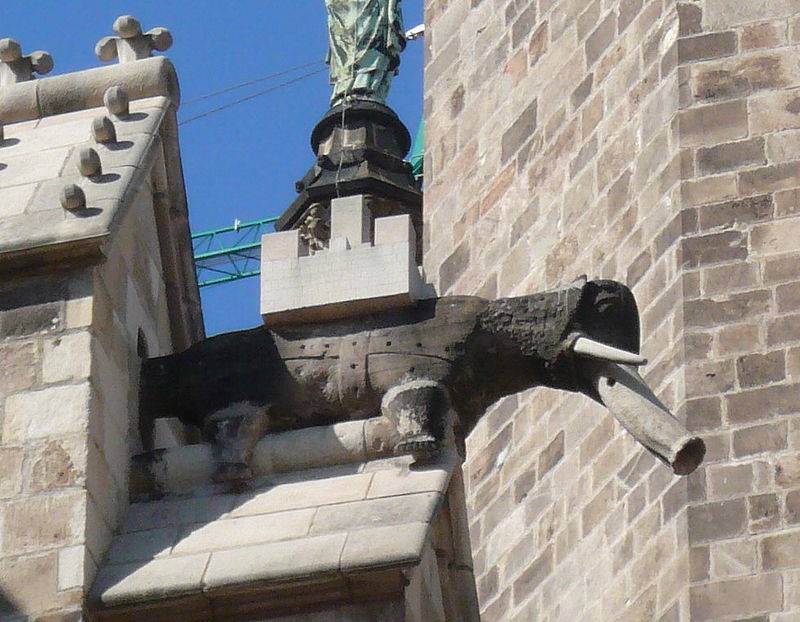
... and now such an elephant - "rain spillway" ...
... and very interesting reliefs. For example, such, dated 1300 year. It, as you can see, depicts a warrior in podsospeshnoy clothing, chain mail with patch plates on his hands, and a helmet like "iron pan". But the most interesting is the armor on his feet. Exactly the same as the effect of Count Tranqualel from the castle of Carcassonne! That is, for Spain, it was quite normal for the time protective equipment.
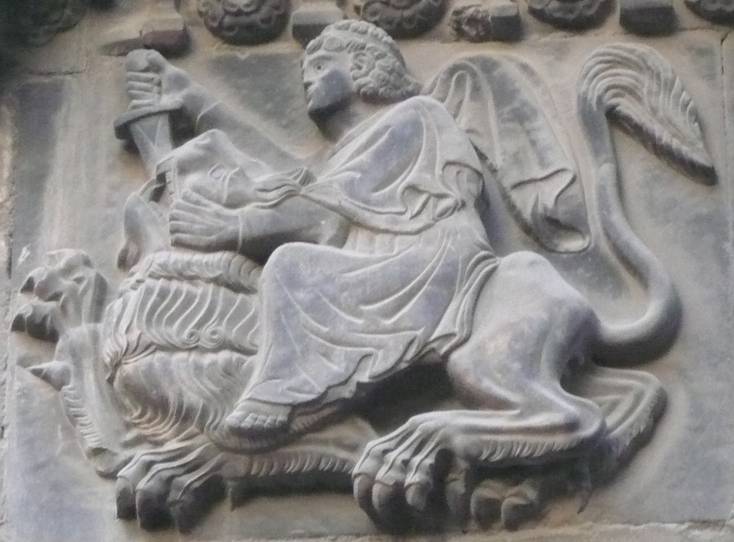
On this bas-relief is a famous scene - "Samson is tearing apart the lion's mouth." But I wonder how he tried to beat the Spanish sculptor: he armed Samson with a dagger!
If after all this you really want to drink, then at your service here is such, and a very old, urban drinking bowl of the 18th century, which nevertheless still works.
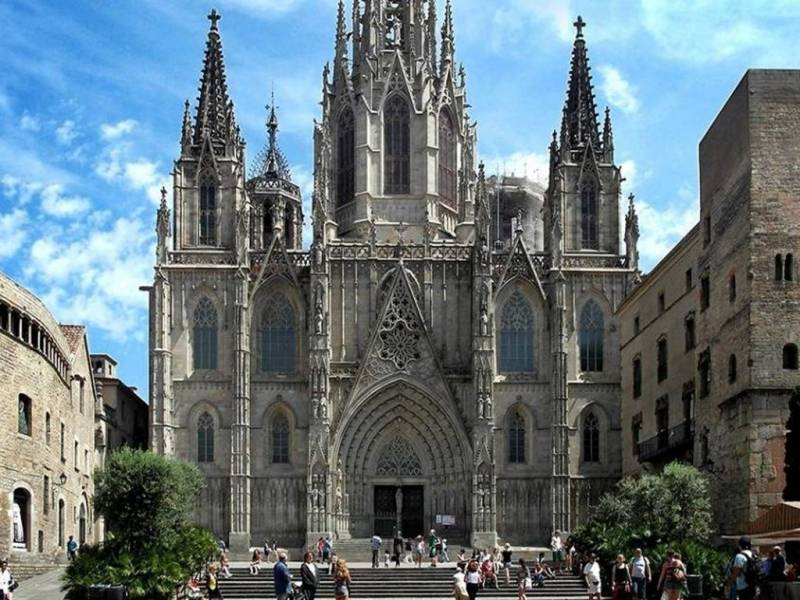
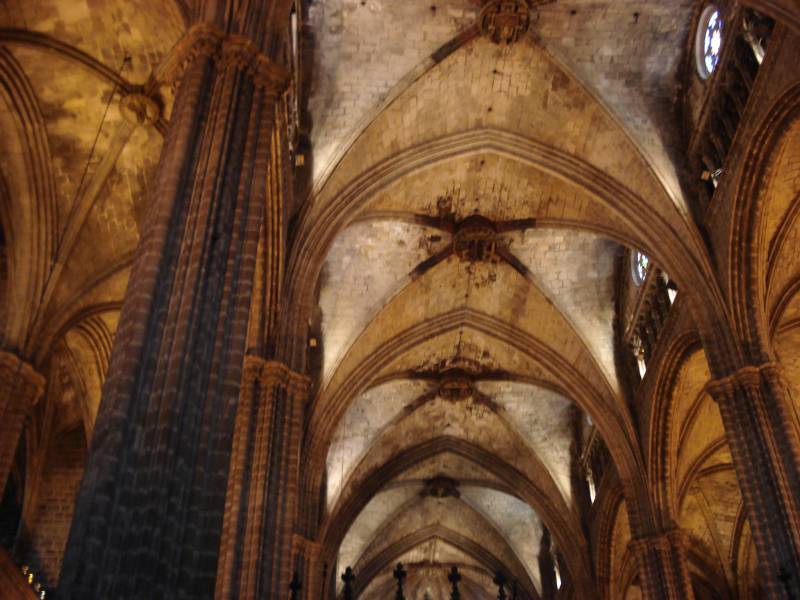
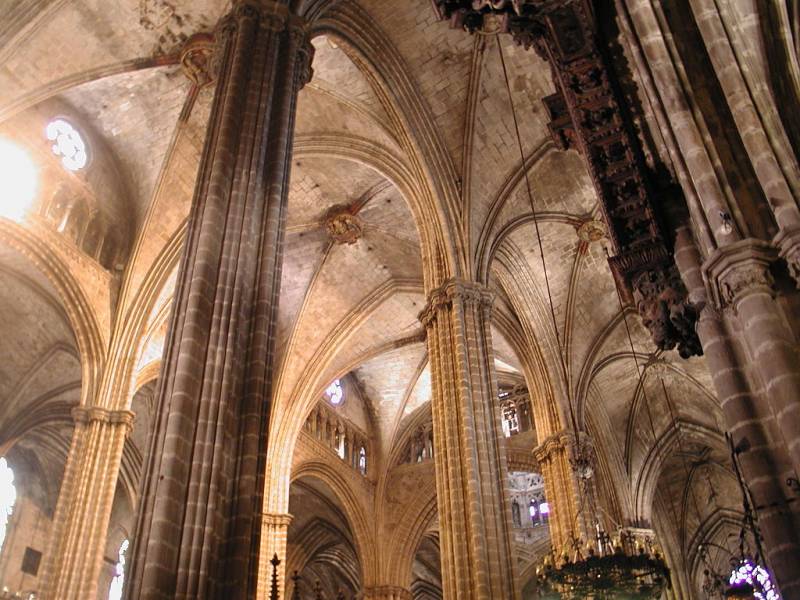
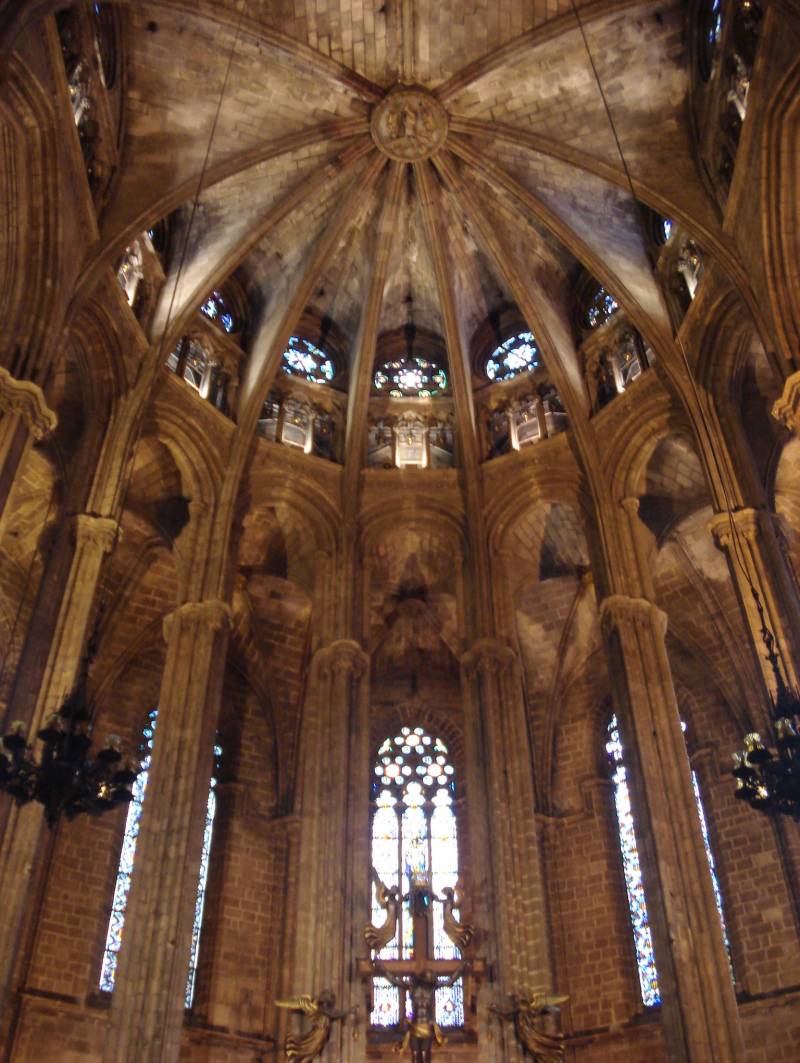
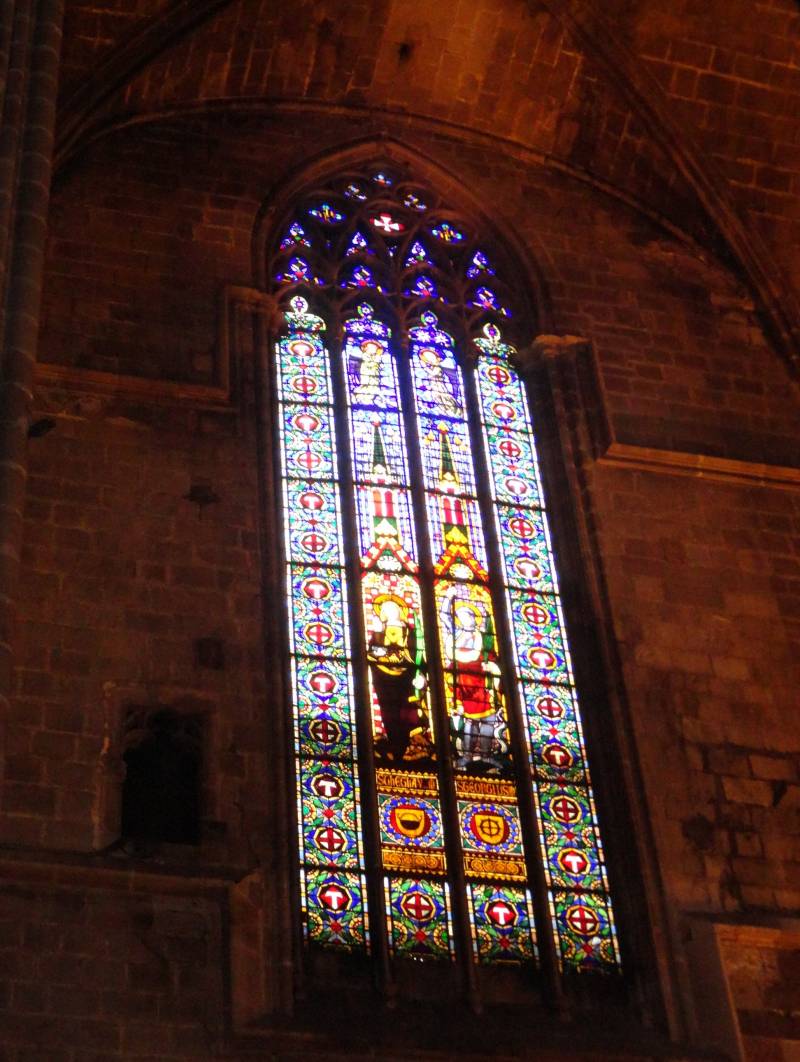
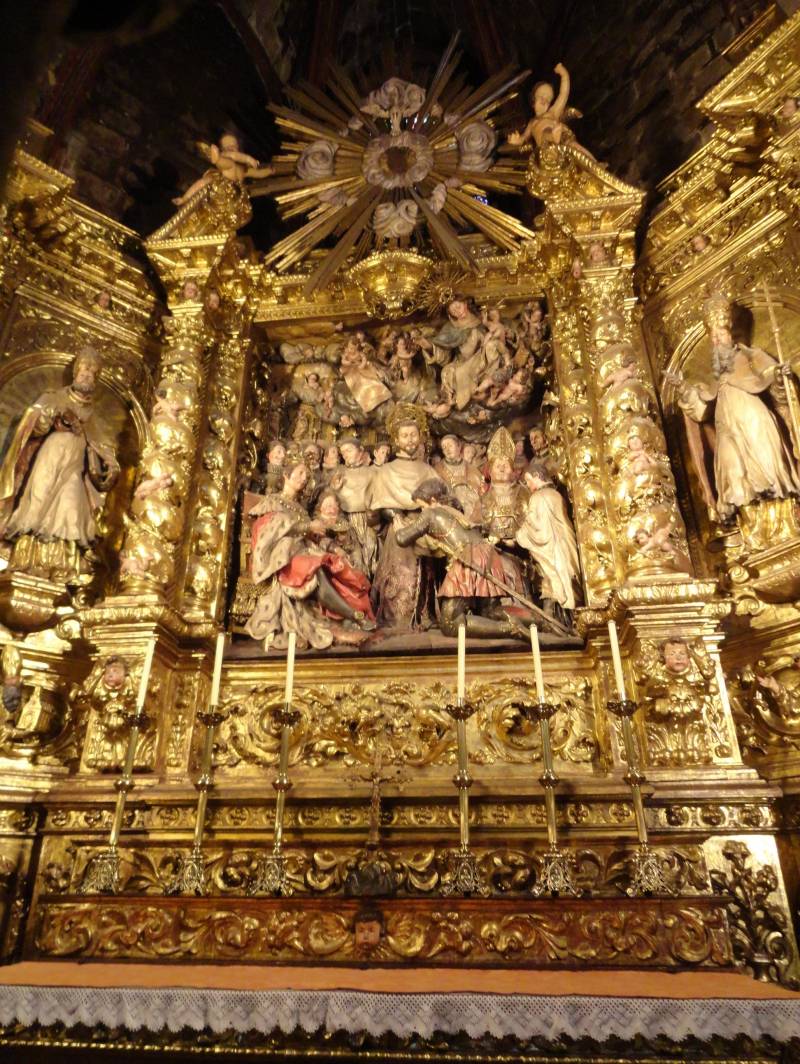
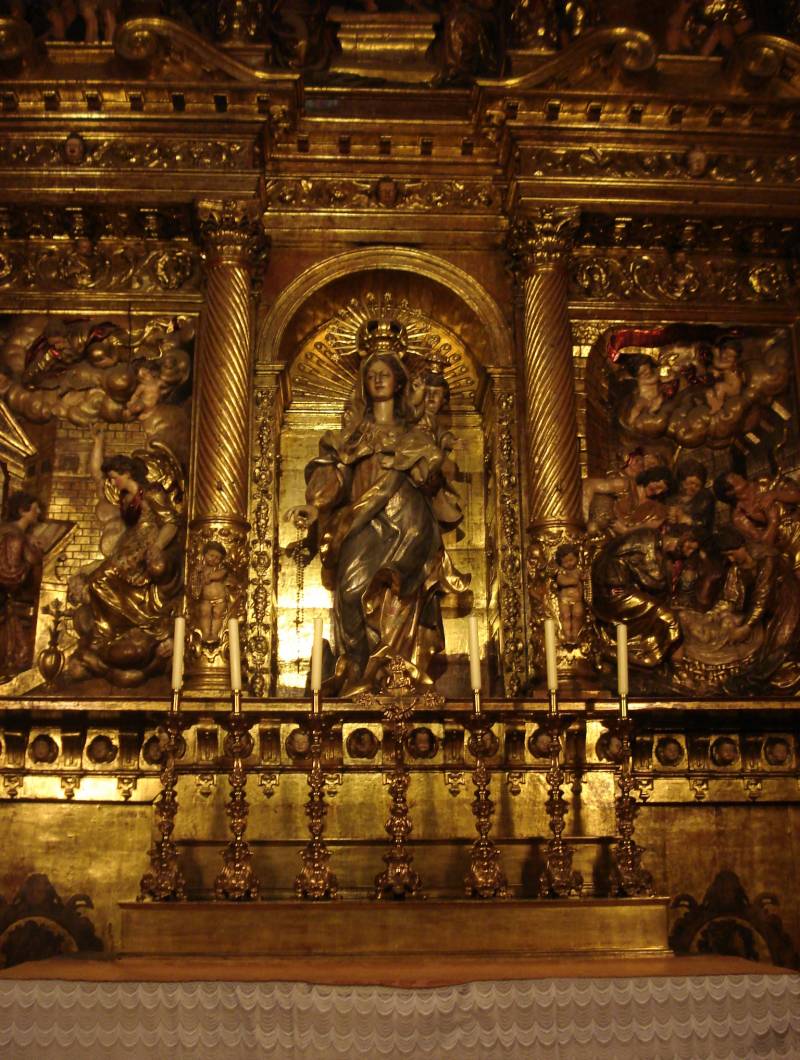
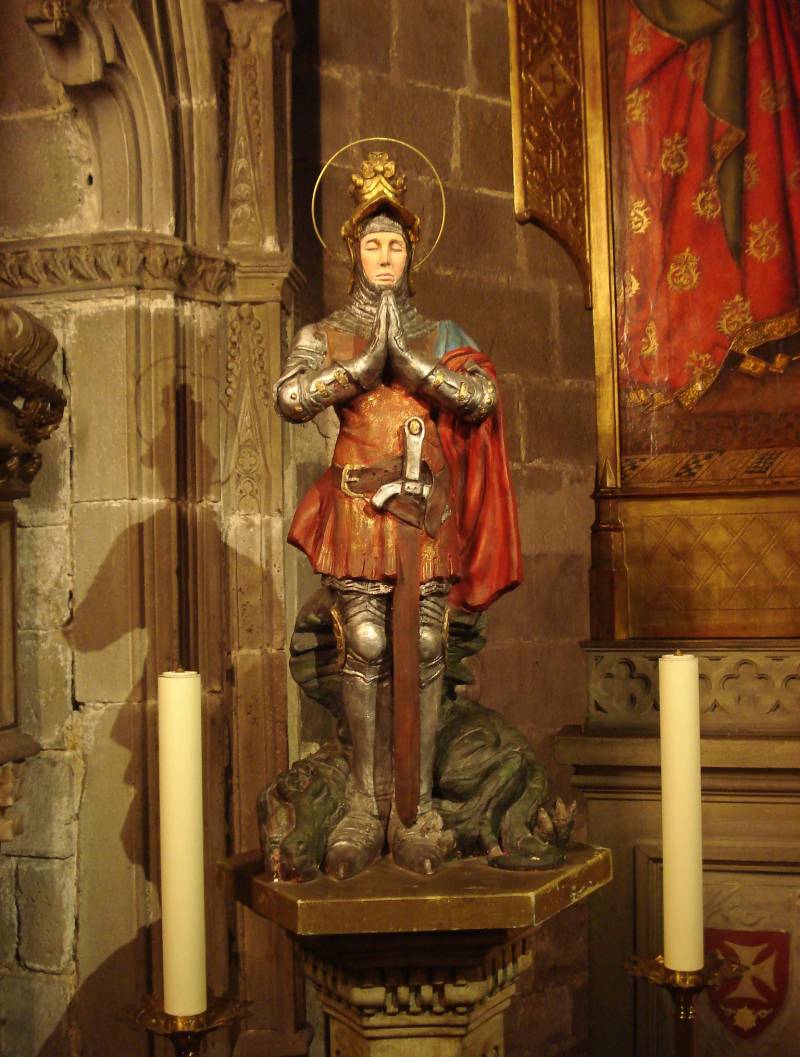
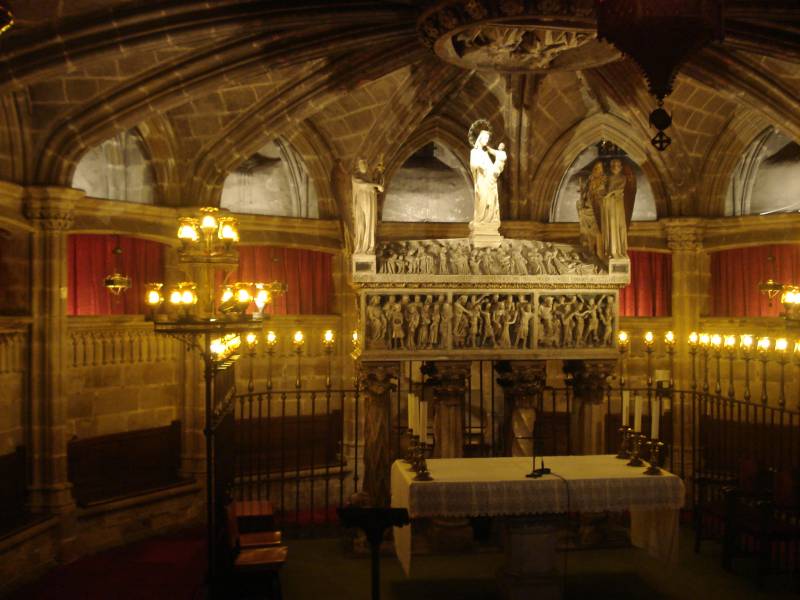
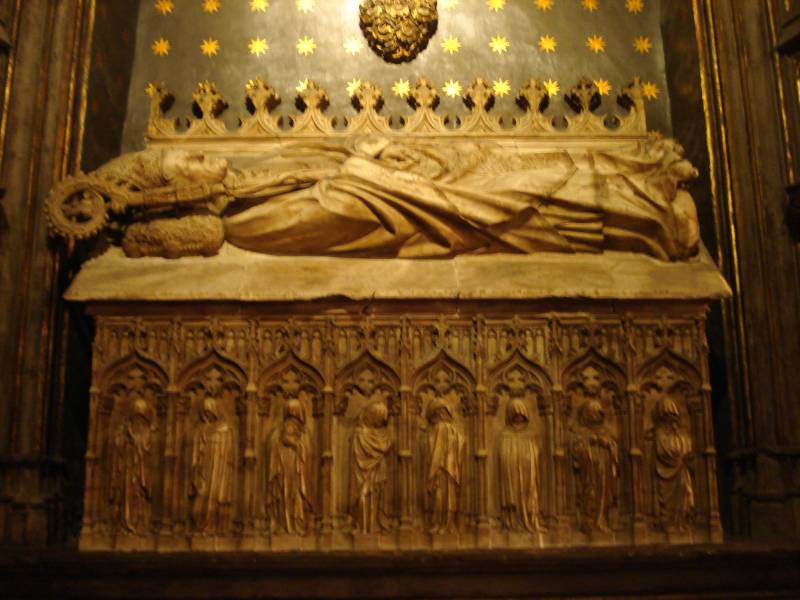
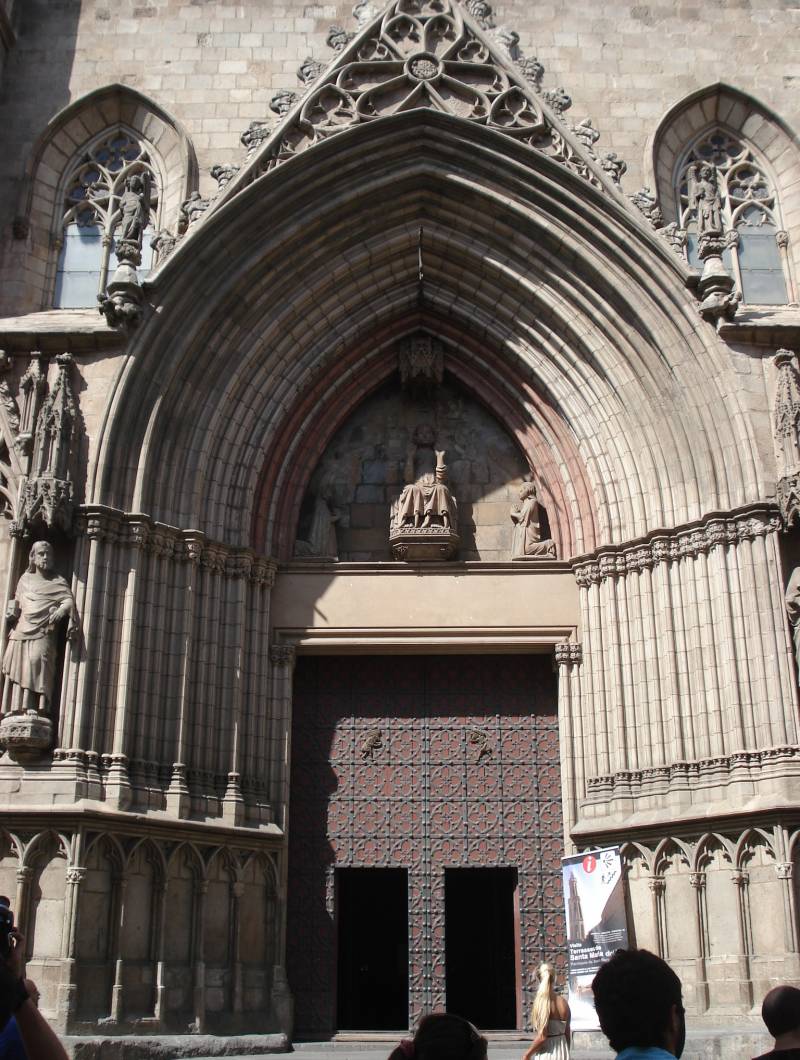
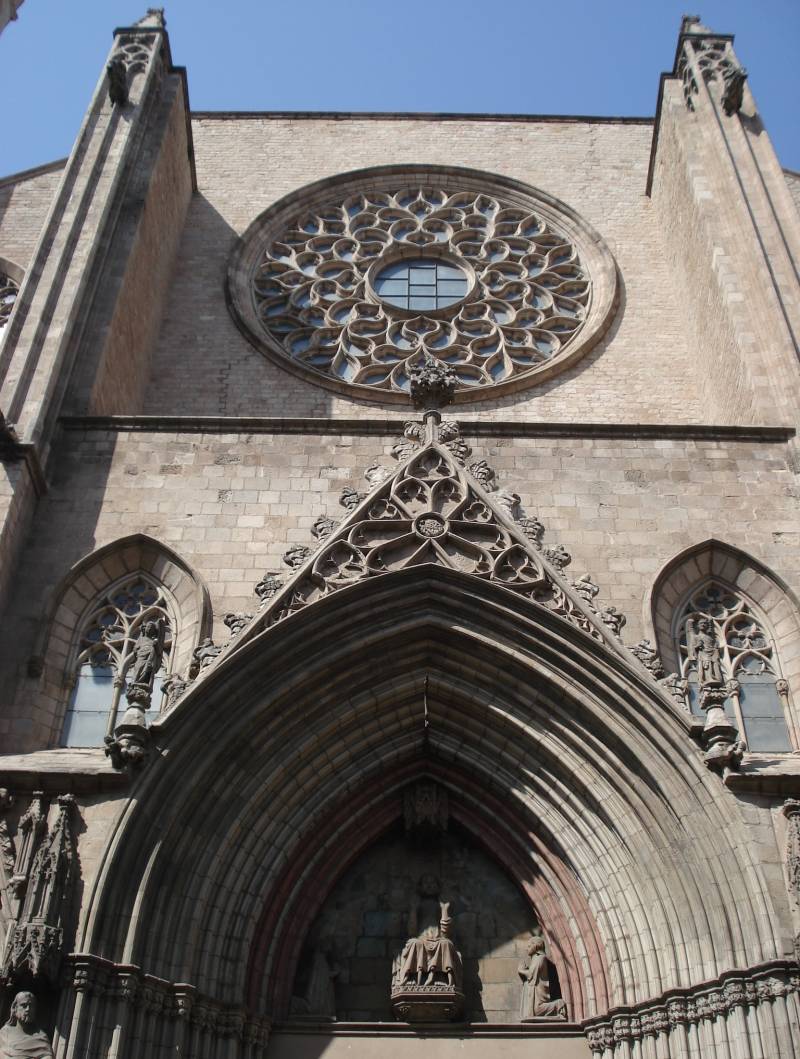
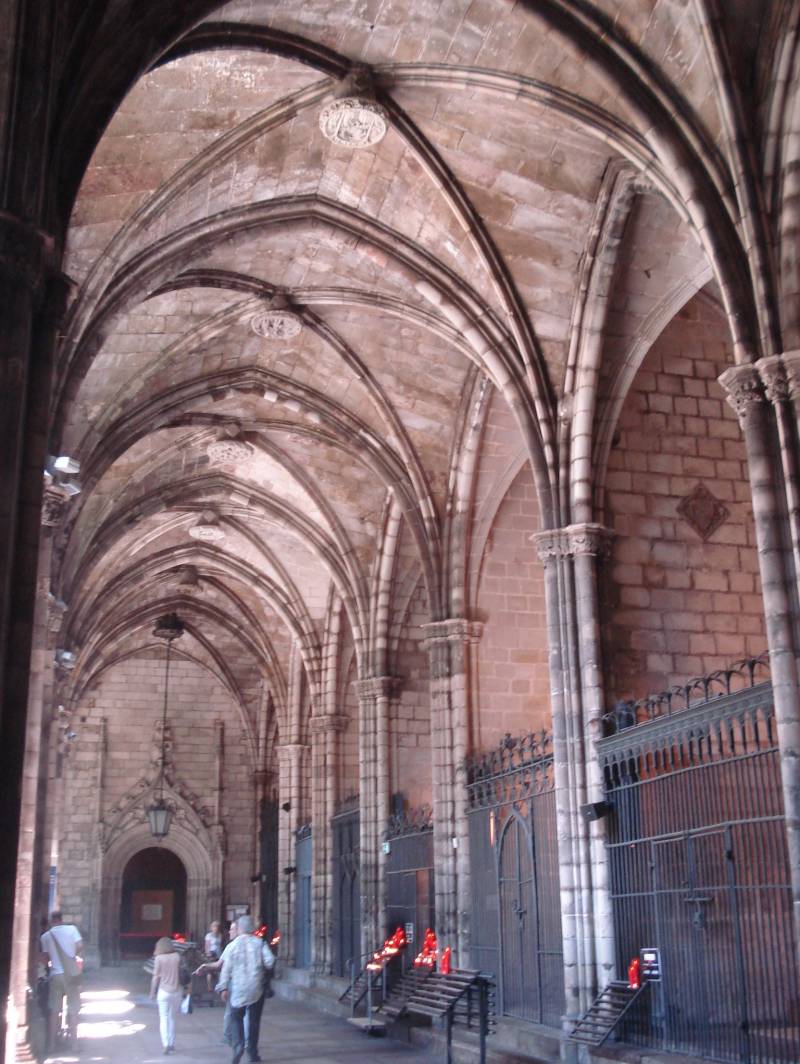
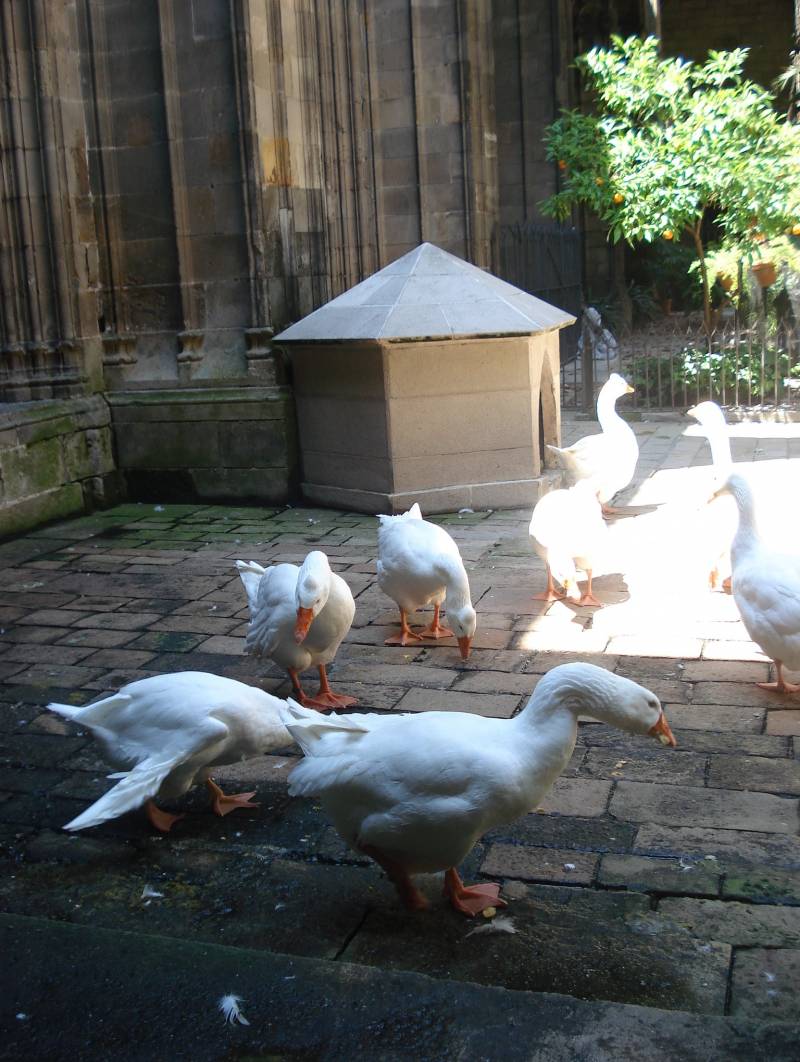
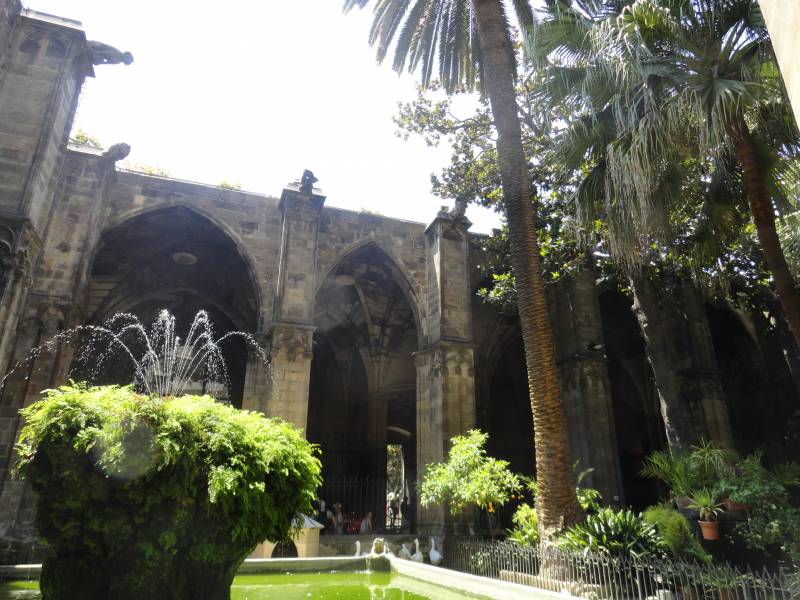
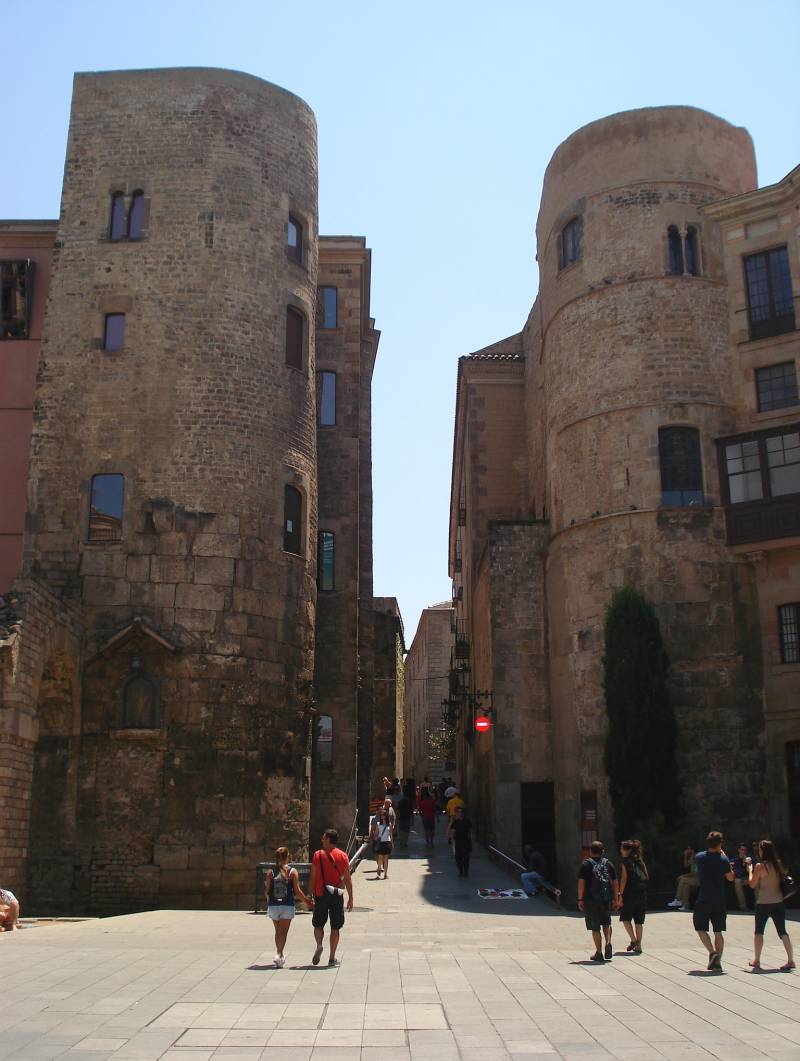
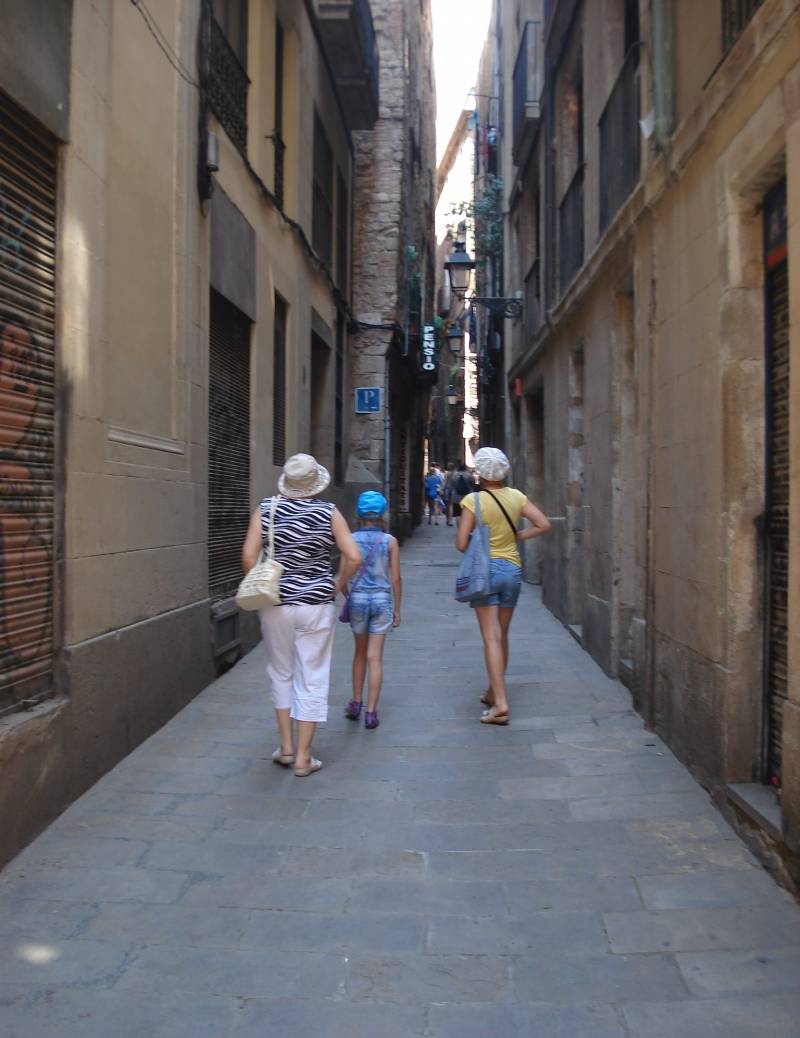
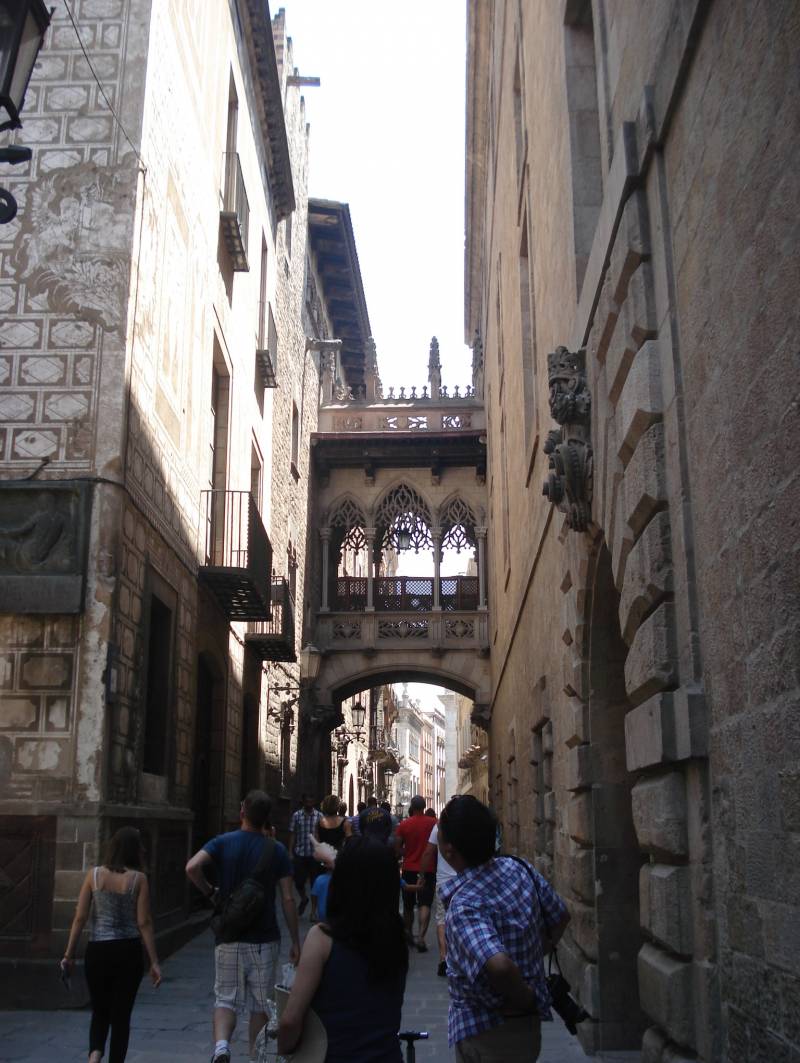
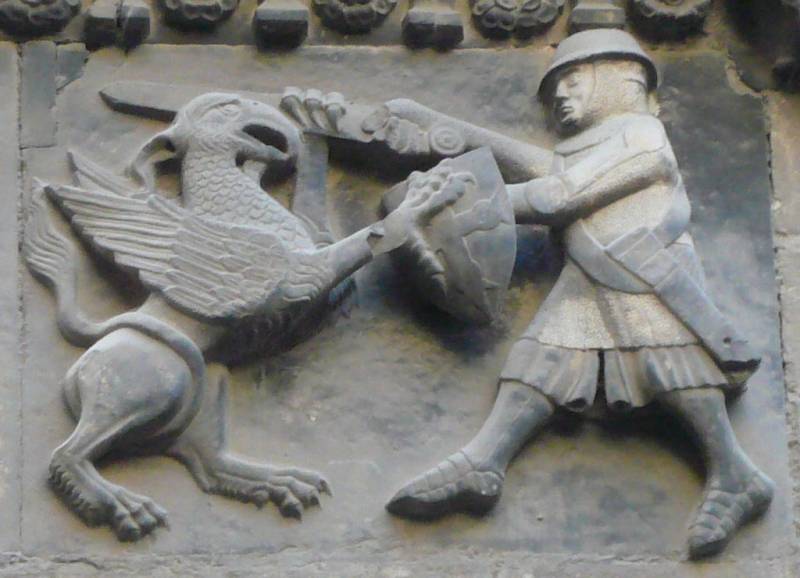
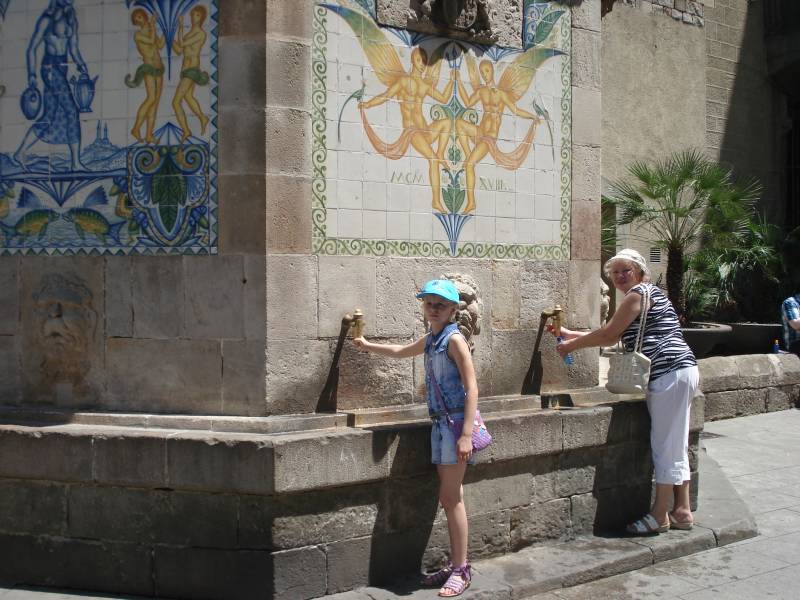
Information